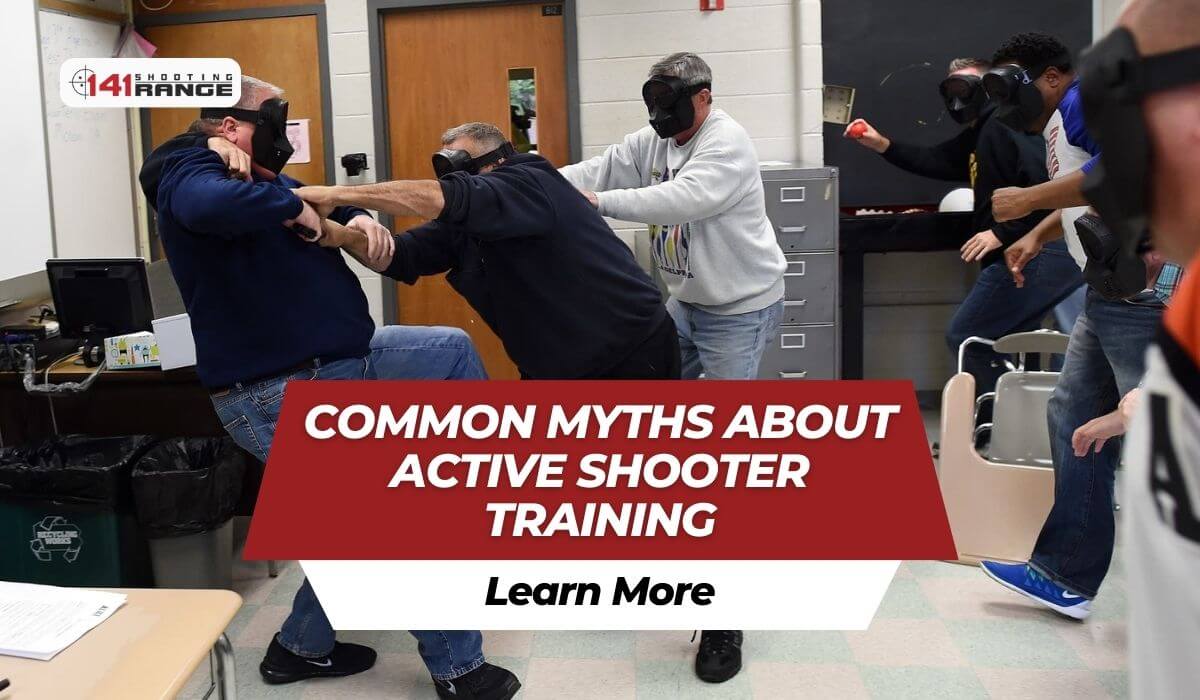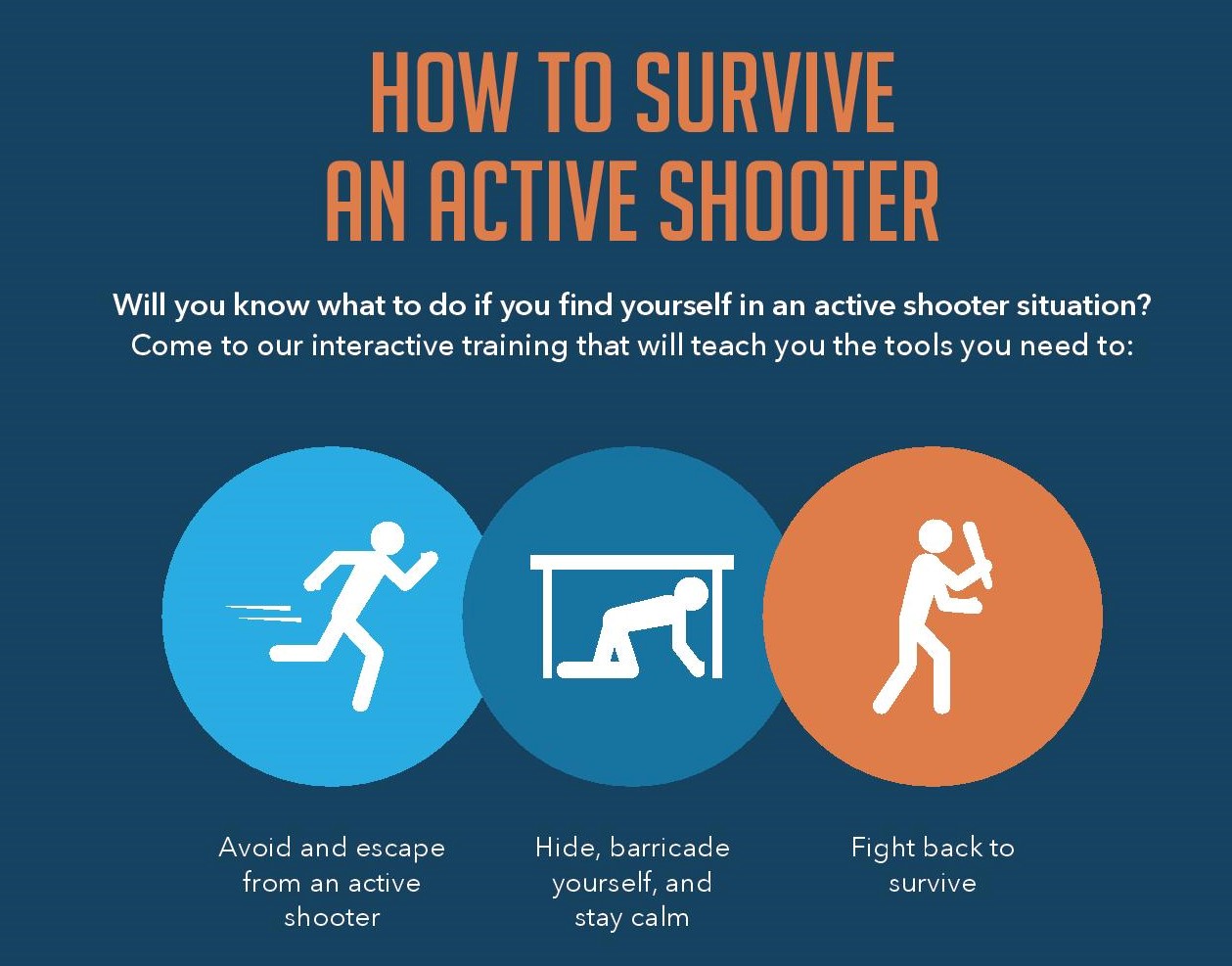Just how to Prepare Your Personnel with Active Shooter Training for Emergencies
Just how to Prepare Your Personnel with Active Shooter Training for Emergencies
Blog Article
Checking Out the Key Elements and Objectives of Reliable Active Shooter Training Programs
Energetic shooter training programs are vital in outfitting people and organizations with the necessary abilities to react successfully to potential hazards. As we discover the complexities of these training programs, it ends up being noticeable that recognizing their comprehensive nature is essential to boosting safety steps and feedback abilities.
Significance of Active Shooter Training
Energetic shooter training programs are essential for boosting preparedness and response despite potential dangers. These programs intend to furnish people, companies, and neighborhoods with the knowledge and abilities needed to successfully respond to active shooter scenarios. The enhancing regularity and severity of such occurrences emphasize the relevance of proactive procedures, as prompt and informed feedbacks can considerably alleviate harm.

Furthermore, these programs can aid alleviate the anxiousness and fear that typically come with conversations concerning prospective threats. By giving organized support and functional strategies, people gain confidence in their ability to respond suitably. Ultimately, the significance of energetic shooter training lies in its prospective to save lives, reduce injuries, and grow a ready and durable area with the ability of encountering unanticipated challenges.
Key Parts of Training Programs
Reliable active shooter training programs commonly integrate a number of crucial parts developed to prepare individuals for real-world circumstances. The very first part is comprehensive education and learning on the nature of active shooter occurrences, consisting of stats, study, and emotional elements that influence aggressors. This theoretical foundation is critical for fostering recognition and understanding amongst participants.
Following, programs typically include training on individual precaution, stressing the "Run, Hide, Fight" approach. Participants discover how to assess their atmosphere, make quick decisions, and take proper actions throughout a situation. In addition, the inclusion of effective interaction abilities is essential, as participants have to comprehend exactly how to report occurrences and share crucial details with police.
One more vital part is the participation of police or safety professionals, that give understandings into tactical responses and the relevance of collaboration throughout a crisis. In addition, programs should deal with the emotional aftermath of an active shooter scenario, offering techniques for dealing and recuperation.
Finally, continuous training and refresher courses are vital to guarantee that knowledge continues to be current and participants feel positive in their capabilities. Together, these crucial elements develop a well-rounded training program that gears up people to react effectively to an active shooter best site occasion.
Realistic Situation Simulations
Realistic situation simulations are an important aspect of active shooter training programs, providing individuals with the chance to participate in hands-on technique that mirrors potential real-life scenarios. These simulations improve the training experience by producing an immersive setting where people can use academic expertise in useful setups.
Through making use of role-playing, mock scenarios, and specialized training centers, individuals experience the immediate obstacles and stress factors connected with an active shooter event. This method of training promotes fast decision-making, teamwork, and the application of security procedures under pressure. It permits responders to establish important abilities such as situational understanding, danger evaluation, and effective emptying procedures.
In addition, sensible simulations aid to determine potential weak points in individuals' reactions, allowing trainers to give targeted comments and boost overall readiness. The unification of differing circumstances, consisting of various areas and aggressor accounts, further enhances the training experience, ensuring that individuals are well-appointed to take care of a variety of possible scenarios.
Ultimately, these simulations offer not only to instruct however likewise to construct confidence among individuals, cultivating a sense of readiness that is crucial for efficient emergency response in the face of an active shooter danger. active shooter training.
Interaction Methods in Training
Clear communication is essential in active shooter training programs, as it directly affects the performance of response efforts during a situation. Training participants have to understand the methods and procedures that will assist their actions if faced with an energetic shooter scenario. Developing clear lines click for info of communication makes sure that all people involved can communicate information without delay and accurately.

Furthermore, training programs must emphasize the relevance of active listening. Ultimately, reliable interaction approaches are vital for preparing individuals to respond emphatically and cohesively in the face of an energetic shooter case.
Psychological Preparedness Methods
Mental readiness methods are increasingly acknowledged as important elements of active shooter training programs. These techniques intend to gear up individuals with the mental resilience necessary to respond efficiently in high-stress scenarios. By fostering a state of mind in harmony with possible risks, individuals can much better handle concern, anxiety, and confusion throughout essential occurrences.
Key emotional readiness approaches include scenario-based training and stress and anxiety shot workouts. Scenario-based training immerses participants in realistic simulations that imitate the turmoil of an active shooter event, permitting them to practice decision-making under pressure. This direct exposure helps construct experience with emergency protocols, boosting instinctual responses.
Tension shot includes gradual direct exposure to stress-inducing situations, enabling people to establish coping mechanisms. This can include breathing workouts, visualization strategies, and cognitive restructuring to reframe negative ideas. By incorporating these strategies, training programs can grow a sense of confidence and control, which is essential in crisis circumstances.
Additionally, post-incident mental support is crucial to resolve the psychological after-effects of an active shooter event. Incorporating psychological wellness sources into training programs not just prepares individuals for prompt feedbacks yet additionally advertises long-term mental wellness, eventually adding to a safer and much more resilient atmosphere.
Verdict

Report this page